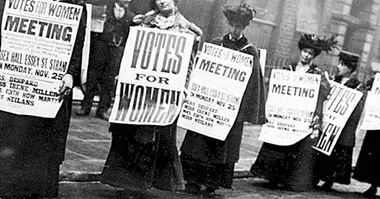The 3 styles of communication, and how to recognize them
Communication styles are the main ways in which we exchange information . Knowing how to recognize and manage them properly is key to improving the quality of personal relationships.
In this article we will see how communication styles are divided into its categories: the assertive, the passive and the aggressive . In addition, we will see how to adapt them to the communicative contexts that we use.
- Related article: "The 10 basic communication skills"
Communication styles
The human mind is complex, and this is due, among other things, to the fact that communication with others allows us to learn all kinds of concepts and ideas about the environment.
Without this capacity, we would not only be islands that are deserted from the psychological point of view, but we could not even think, because we did not have language. Despite this, the fact that living in society we learn to express ourselves does not mean that we always do well. That's why it's good to know the communicative styles.
These communication styles depend, among other things, on the attitudes and elements of social skills that we use to express our ideas and emotional states or feelings .
1. Aggressive style
The elements that characterize this communication style are verbal and non-verbal threats, as well as direct accusations and reproaches. In short, the objective of this set of initiatives is enter a dynamic of power in which one has the domain and the other part is minimized.
It is not so much an attempt to communicate valuable information as one has, but rather to have a concrete effect on the other person or on those who observe the interaction, in order to gain power. In addition, the use of the ad hominem fallacy, or directly of the insults, is not strange.
On the other hand, the use of aggressive communication style is also characterized by paraverbal and nonverbal elements that express anger or hostility . For example, high tone of voice, tension of the muscles, etc.
2. Inhibited or passive style
This is a communication style based on the inhibition of those thoughts and feelings that in normal situations could be expressed.
The ultimate purpose is to limit much the communicative flow, either because there is something that hides because it is information that incriminates, or because the possibility of not pleasing others is feared. There is also the possibility that the reason for adopting this attitude is simple disinterest, or the desire to settle a dialogue as soon as possible.
In practice, passive communication style is typical of shy people, who are insecure in personal relationships, or else introverts, who try to communicate more with less. This means that fear does not have to be the trigger. Some people understand that the "default" state is isolation and loneliness, and that every effort made to express oneself must be justified.
Also, if there is something important that you want to say but there is a fear of communicating it, often it is said behind the back of the person concerned . Among the characteristics of this communication style are relatively little visual contact, low tone of voice, short answers or little relation to what is spoken, and a non-verbal language that expresses defensiveness or insecurity (although this last component varies more).
- Maybe you're interested: "Differences between extraverted, introverted and timid people"
3. Assertive style
In the assertive style, what you think and feel is directly communicated, as long as you believe that you have value and that you will not unduly bother someone. That is, it communicates honestly and transparently, but without trying to dominate the other person.
Thus, it is intended that social skills themselves be establishing a balance in which both the interests of each other and those of the other person are taken into account, for the relevant information to flow without complications .
Given these characteristics, it is considered that this is the most desirable communication style for most situations.
The use of these expressive resources
Although the vast majority of people are capable of using communication styles, we can distinguish between individuals according to the degree to which they tend to adopt one of them more frequently.
For example, in situations of conflicts of interest, some people will tend to adopt quickly an aggressive communication style, or a passive one, etc.
In addition, on the other hand, although generally the assertive style is the most adequate, there are concrete situations in which passive or aggressive styles can make sense . For example, by recognizing a serious error that one has committed, or by expressing frustration in a situation that is the fault of another person. Rationality is not always ahead of our way of relating; in fact, he often has little influence over her.



















